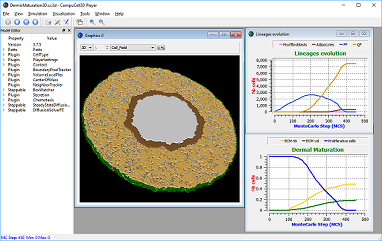Fibroblast state switching orchestrates dermal maturation and wound healing
Emanuel Rognoni, Angela Oliveira Pisco, Toru Hiratsuka, Kalle Sipila, Julio Belmonte, Atefeh Mobasseri, Christina Philippeos, Rui Dilao, Fiona Watt
doi: https://doi.org/10.1101/236232
Accepted August 2018 to Molecular Systems Biology.
Preprint: https://www.biorxiv.org/content/early/2018/06/14/236232
Abstract
Murine dermis contains functionally and spatially distinct fibroblast lineages that cease to proliferate in early postnatal life. Here we propose a mathematical model in which a negative feedback loop between extracellular matrix (ECM) deposition and fibroblast proliferation determines dermal architecture. Our model faithfully recapitulates dermal maturation, predicting a loss of spatial segregation of fibroblast lineages and dictating that fibroblast migration is only required for wound healing. To test this we performed in vivo live imaging of dermal fibroblasts, which revealed that homeostatic tissue architecture is achieved without active cell migration. In contrast, both fibroblast proliferation and migration are key determinants of tissue repair following wounding. The results show that tissue-scale coordination is driven by the interdependence of cell proliferation and ECM deposition, paving the way for identifying new therapeutic strategies to enhance skin regeneration.
Project Zip File
Original version: DermisMaturation-master.zip (Requires CompuCell3D v3.7.5.)
Modified version: DermisMaturation-master_CC3Dv378.zip (CompuCell3D v3.7.8)
Screen Shot
(click for a larger version)
 CompuCell3D
CompuCell3D